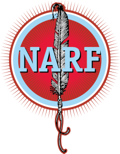Native Americans are among the fastest growing groups in the nation and Native American voters increasingly hold the power to change elections. Despite growing turnout, Native American participation trails other groups. This is due to the unique obstacles Native Americans face for voter registration and turnout including a lack of home mail delivery and residential addresses on homes, geographic isolation, poor road networks, and technological barriers, among many others. Donate now to support work to empower Tribal Nations and Native voters.

DISCONNECTED DEMOCRACY: The Impact of Mail Service on Native American Voter Registration and Mail Balloting
Residential addressing and home mail delivery are critical issues in the voter registration and mail balloting process. While most households have residential addresses in the familiar city-style formats, some rural areas and especially Native American reservations do not have similar addressing systems or full U.S. Postal Service coverage. Lacking a residential address or access to home mail delivery complicates voter registration, election day voting, and vote by mail (VBM) opportunities. Nonexistent or unreliable mail service disrupts the delivery of timeline registration forms and ballots and states often reject registrations from households that do not have a physical address. Even if voter registration is successful, states sometimes fail to mail VBM ballots to these homes or count VBM ballots returned from these homes. And strict voter ID requirements sometimes disenfranchise voters with non-traditional addresses. These issues systematically suppress Native American participation and are especially harmful in states that significantly rely heavily on VBM. And we already know that Native American turnout is often lower than any other group largely because of systematic barriers to voting.
This paper explores the relationship between Native American populations and the availability of home mail delivery service using U.S. Census Bureau data to better understand the geographic and demographic dynamics in these areas. We show that areas with more Native Americans are associated with more unreliable mail delivery. This association is stronger for Native Americans than any other racial or ethnic group and applies to both on- and off-reservation areas. However, the pattern is especially strong in states with high numbers of Native Americans living on reservations. In these states, reservation areas are classified by the Census Bureau as having significantly more mail delivery barriers than off-reservation areas. In sum, the more Native Americans there are in an area—whether it is on a reservation or not—the more likely the area has been assessed by the Census Bureau as having unreliable mail delivery.
Read the full report: DISCONNECTED DEMOCRACY: The Impact of Mail Service on Native American Voter Registration and Mail Balloting.

ELECTION INEQUITIES IN INDIAN COUNTRY: Understanding Native American Turnout in Federal Elections
Native Americans are among the fastest growing groups in the nation and Native American voters increasingly hold determinative power in elections, especially in the many areas where populations are concentrated, like reservations. Despite a recent trend of modest growth in turnout, Native American participation trails other racial and ethnic groups. This is due to the considerable obstacles Native Americans face for voter registration and turnout including a lack of home mail delivery and residential addresses on homes, geographic isolation, poor road networks, and technological barriers, among many others. We estimated turnout for the last six federal elections because turnout is a key indicator for understanding inequalities in political participation and working towards equitable solutions for Native American communities. To better understand the issues, we looked nationally and focused in on 13 states with relatively high Native American populations. Results highlight the considerable work ahead of us.
Read the full report: ELECTION INEQUITIES IN INDIAN COUNTRY: Understanding Native American Turnout in Federal Elections.


